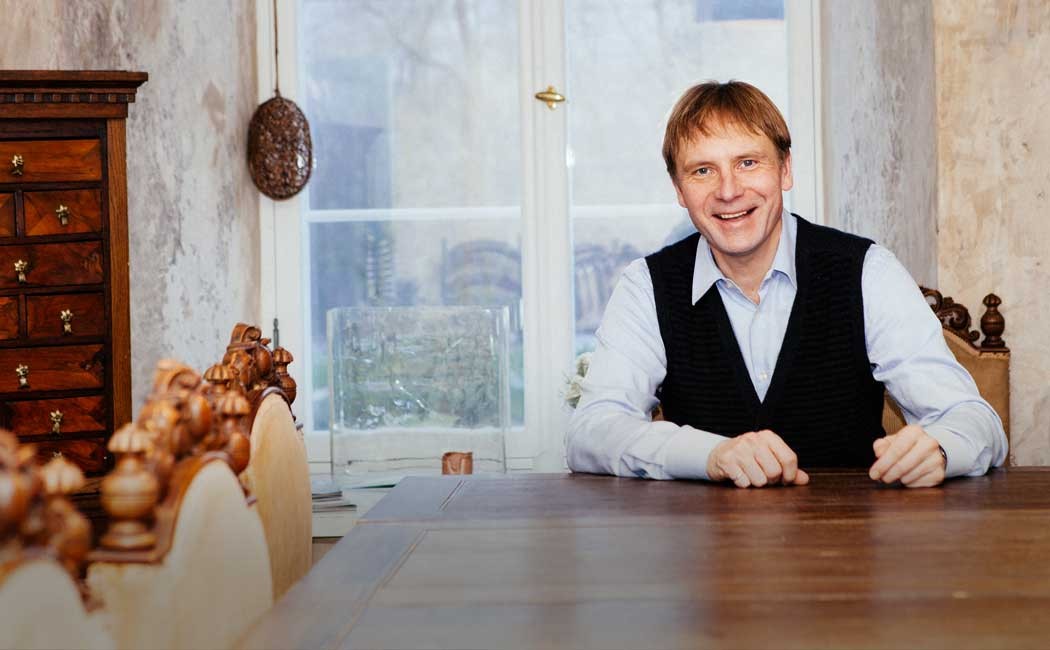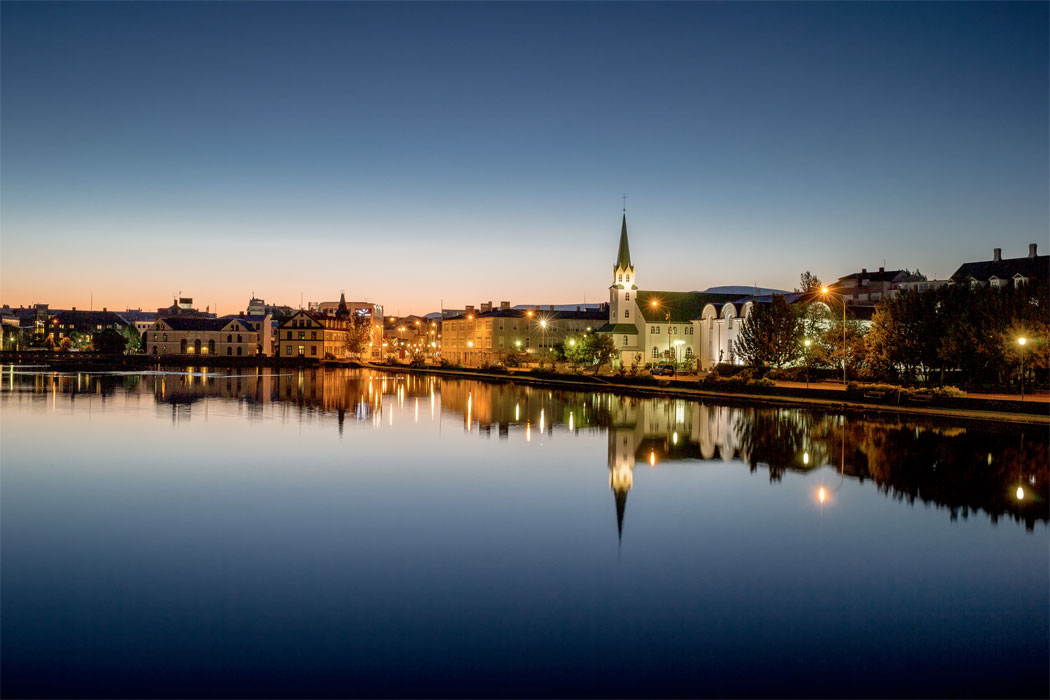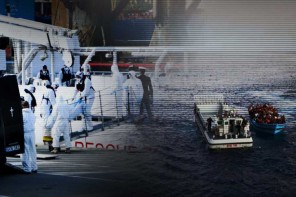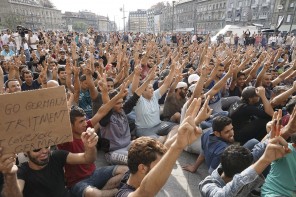Contrary to the widespread notions that are currently dominating discussions and headlines in Estonia: nobody actually wants to come to Estonia. Estonia is not threatened by the “Islamist masses.” A much greater threat is represented by the alarming population decline in rural areas, an ageing population and if the present immigration policy continues, the very real threat of the country becoming an isolated provincial backwater nation, writes Estonian Member of Parliament, Eerik-Niiles Kross.
The weekly Estonian newspaper Eesti Ekspress, recently published a selection of cartoons that foreigners had drawn of Estonians. Most of them made fun of our bad service culture, some laughed at our fears about how others perceive us. One image featured a vivid representation of Estonians flinging shit at others and another considered the absence of visible emotions the funniest Estonian trait. The last one was considered the most insulting by Estonians according to the poll conducted by Eesti Ekspress.
I don’t know if one should be surprised by this result. 98 percent found that it is OK if a dinosaur considers Estonian service culture outdated, but 22 percent thought that pointing at the lack of outward emotions in Estonians is offensive.
The debate over accepting refugees that has emerged in Estonia over the last weeks shows that we got away very lightly with the cartoons. Bad service culture is just a surface ripple. And it’s probably good that Estonians show little of their real emotions. I, too, have until now thought that Estonians should sometimes smile more.
But now it begins to seem that the issue is not about hiding positive emotions, but about not having them. Obtusely bureaucratic approaches to problems are not a surprise. But I really could not have imagined that we Estonians were capable of such prejudiced fear, unfounded scornful generalisations, meanness, navel gazing and believing that we ourselves are so uniquely special.

Three Estonian choirs sing about refugees
There are three choirs singing in the Estonian debate about the refugee issue, but each of them is droning on with their own dissonant tune that conflicts with each of the others. The most vocal of them is the “NO to refugee masses” choir, whose message is dominated by fear. If your nerves aren’t prepared for it, I recommend that you not read their online posts.
To give an example of their style, I’ll quote a few of their opinions:
“Genocide against the white race is gaining force and apparently they want to get rid of Us in a generation or two!”;
“the easiest way is to send them back because most of them do not want to work”;
“Send the unhappy refugees who have become animals back to their homes! I like that slogan. We are not racists, we do not hate other nations.”
The second choir is consists of politicians and activists who wish to offer alternative solutions to receiving refugees. “We have to deal with the underlying causes of the problem, not the consequences.” “A quota policy is unacceptable: any such program has to be conducted on voluntary basis.” The discussion about dealing with the “causes of the problem” naturally has its own logic, and the West has certainly contributed to the humanitarian disaster that has emerged both in the Middle East and North Africa.
For example, by bombing Libya to ruins, breaking up its authorities and prematurely withdrawing afterwards. But identifying and developing a solution to the causes is a long term strategy; it will take years, probably even decades, and will require an enormous amount of dedication, courage, resources and consensus. At the moment, it seems that Europe doesn’t have enough of those even for itself. Discussion of how to deal with the causes of the refugee problem as a solution today, is as useful as discussing reasons for the outbreak of World War II at the Narva Front in 1944.
That doesn’t mean that Estonia and Europe do not have to help those countries in which humanitarian crises originate. In Turkey there are 1.7 million war refugees in refugee camps; in Tunisia more than a million; in Jordan more than two million; in Lebanon more than a million, etc. Supplying and distributing food and medicine to refugee camps and guarding them could be and should be done on a considerably wider scale.
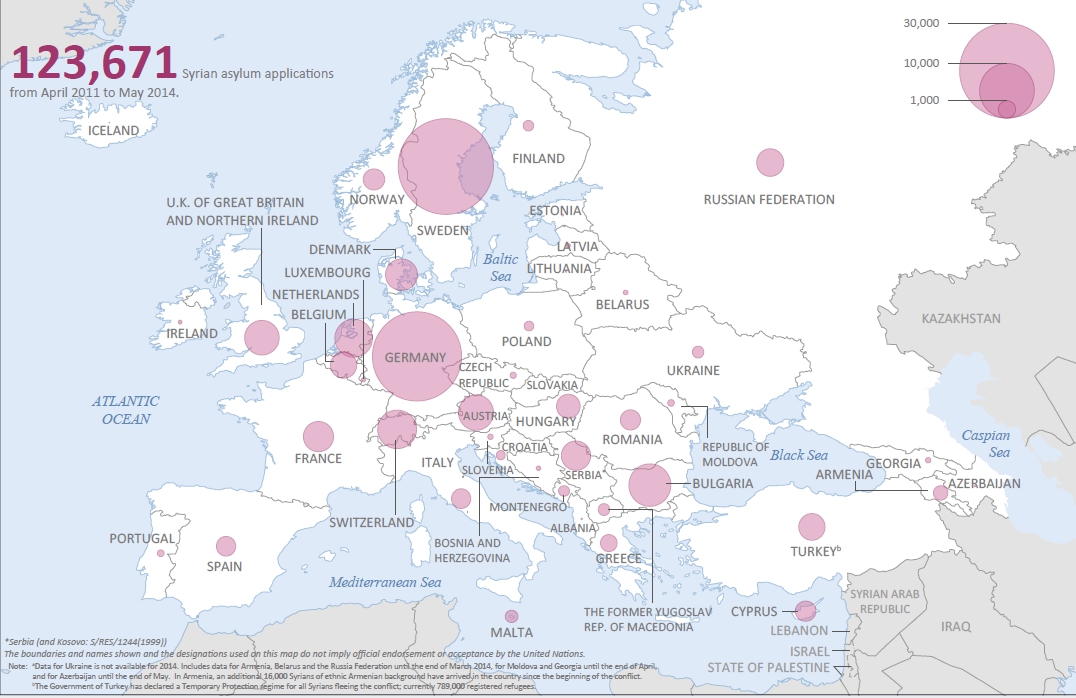
Dealing with the causes
The EU says that it might not be possible to send a mission to Libya to help bring human trafficking under control because no agreement with the government of Libya exists for that. But this is pathetic and ridiculous excuse. There currently is no strength, courage and will in the EU to agree to such a mission. And naturally, by sending aid to refugee camps we’re not dealing with the “causes”. Dealing with the causes would necessitate military intervention against ISIS: an operation that would be too great even for the US and would require the rebuilding and reforming Syria, Iraq, Afghanistan. In a word, it would require us to change the world. It would be wonderful to actually deal with the root causes and not just in a superficial way. Sadly, we claim to be dealing with the causes of the present crisis, but the fact that we also claim that accepting 700 war refugees is beyond our means and could “irreversibly change the Estonian society” is, forgive me for saying so, idiotic.
The third “choir” is concerned about the methods used for calculating refugee quotas. They promise to fight inequities and for an honest refugee policy and a system that takes into account the “real interests” of Estonia. While those who seek to identify and fix the cause often confuse (often knowingly) tactics and strategy, then those who fight for quotas seek solutions within a bureaucratic fog. This is a well-known European Union instrument that seemingly reduces responsibility (because the illusion of having put up a “good fight” is created) but only piles up problems for the next group of decision-makers.
Today Estonia is in a situation where a large part of the population is against receiving any refugees. Because of fear, historical trauma, isolation, racism, there is a perception that the refugees are coming to Estonia to “get social assistance”, etc. It’s necessary to know why we think this way and to understand the reasons for it; we cannot afford to ignore this attitude. Contrary to the opinion of the apologists who claim Estonia is “a little white society”, if we allow this sort of attitude to continue we will become marginalized within Europe.
Estonia’s rigid system
Estonia has built up a bureaucracy that practically prevents accepting any refugees. This has been successfully preserved for 20 years while at the same time we have pretended to have a policy of openness. In 1991, our experience and memories of Russification and the fear of social and cultural genocide were understandable. We are still working on the many challenges within our Russian-speaking community. But this antiquated system is backfiring today.
For the last two decades, Estonia has had two great goals. First, to integrate with the West in order to guarantee security and adopt Western values and welfare. Second, to grow as a nation: to preserve and to continue to develop our cultural heritage and to realise ourselves, as a nation, in the best way possible.
Estonia has done a great job in working towards the first objective and things are moving in the right direction. But we have largely failed to achieve the second. Estonia is like an isolated white reservation that is running out of people and only offers exit doors. Over the past ten years, the population in nine of fifteen Estonian counties has plummeted by 15 percent. If the present trends continue, the population will decline in eleven counties by an additional 15 percent or more in the next five years.
Think about it: by 2020, most of the counties of Estonia will have lost nearly half the population they had in 1991. And now we’re afraid that 1000 or 700 Syrian and Somalian refugees are a threat? A threat to what?
Number of People Who Acquired Estonian Citizenship Through Naturalization 1994-2014
Source: estonia.eu
Statistical expansiveness
Life has shown that when one species does not inhabit its territory, another will replace it. Comparisons of global competitiveness of nations show that those countries that are both expansive and open are most successful. Statistically Estonia seems to have quite a bit of space. Nearly a tenth of our working population works and lives outside Estonia. But this is regarded more as a negative statistic rather than a positive one. Realising Estonia’s global network and putting it to work in the interests of Estonia, using it as an instrument to introduce Estonia to the world is an immense task that hasn’t yet been undertaken.
Closing Estonia’s doors to immigrants will start to significantly influence our capability not just to grow and develop, but even to survive. The false threats presented by anti-refugee forces, that if Estonia’s immigration policies are eased, Estonia will become full of “blacks”, are not based on truth in any way.
Estonia has been open for the free movement of people inside the European Union for ten years. Over 30 million people who were born outside the EU lived in the European Union in 2010. For ten years, they have had the possibility to come to Estonia, to work and live here. Do you know how many of them have actually decided to come to Estonia? The number is practically so nonexistent that won’t even fall within the limits of statistical error: tens of people at most. Contrary to the widespread notion that has emerged in recent weeks, nobody actually wants to come to Estonia. Estonia is not threatened by the “Islamist masses”, but by empty rural regions, an aging population and, if the current immigration policy continues, by becoming an isolated island within Europe and by total provincialization.
Are we tired as a nation?
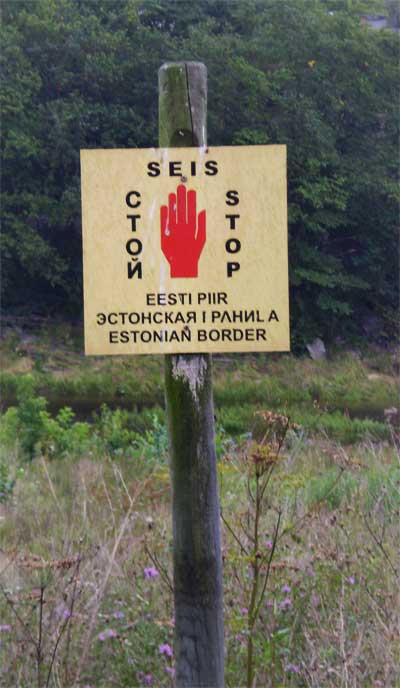 During the last hundred years, we have successfully solved several existential problems, survived many wars, four occupations and Russification. We have finally achieved our freedom and, at least on paper, created the conditions for the growth of our nation, economy and culture. But people vote with their feet. Something has gone wrong. Are we tired as a nation? Are we starting to feel today that during the last hundred years we have lost generations of elite, whether Estonian, Russian nobility, Baltic Germans or Swedes? Have we lost a critical mass of people whose open way of thinking and whose new ideas are necessary for developing and creating an attractive Estonian living environment?
During the last hundred years, we have successfully solved several existential problems, survived many wars, four occupations and Russification. We have finally achieved our freedom and, at least on paper, created the conditions for the growth of our nation, economy and culture. But people vote with their feet. Something has gone wrong. Are we tired as a nation? Are we starting to feel today that during the last hundred years we have lost generations of elite, whether Estonian, Russian nobility, Baltic Germans or Swedes? Have we lost a critical mass of people whose open way of thinking and whose new ideas are necessary for developing and creating an attractive Estonian living environment?
If it is possible to convince a large part of our society that accepting 1000 war refugees into our country threatens our existence, then it demonstrates a alarming lack of self-confidence in a large part of our society.
The Syrian war refugees should be accepted out of pure humanity. Not to speak of other practical considerations. Even if the utterly absurd notion that “they do not want to work” were true, we still need to help these people.
We do not allow the refugees to work
It is true that a large share of the refugees arriving in Europe do not work – at least for some time after their arrival. Why? Because we do not allow it. According to the EU directive presently in force, the papers of a refugee have to be processed over nine months – as of this Spring in Estonia, within six months. During that time the refugees have to live without working and the state is obliged to support them. Put yourself into such a situation where you are not allowed to work, and are at the same time accused of being lazy and living at the expense of others.
To claim that the war refugees “want to come here so that they can live freely at our expense without doing anything” is in the best case naive and in most cases, just foolish. Of course they come to Europe in hope of a better life. Life for them is better here. But they come here after they have been driven to despair in their homelands, and have lost their homes or have been driven away from them.
Naturally they may experience problems integrating in their new countries. Naturally there will be some cultural conflicts. But any real danger, which is being suggested by some, simply does not exist. We need to adapt to the new world. We can use this opportunity to do so to Estonia’s advantage, lest we allow our immigration policies to be dictated by others and by market forces.
In the past, Estonia has shown a capacity for innovative thinking and reorientation. Creating a model for accepting refugees that taps into their potential and helps Estonia will not only help those who are in trouble but will also help reduce the evils in our global society. This should not be a problem for Estonia. Estonia’s goal should not be to isolate itself in a tin can. While canned food may preserve for some time, it will always spoil in the end. If it is not consumed before that.

